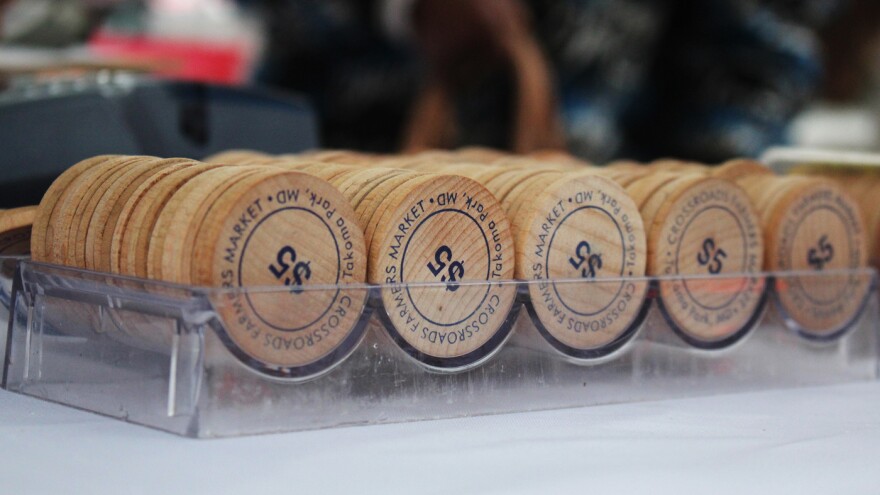The contract that allows low-income families to use SNAP, formerly known as food stamps, to buy food from farmers markets was set to expire at the peak of summer and the growing season for farmers. The tight knit community of farmers markets came together to find a way for low-income families to continue receiving fresh produce from local markets.
To use SNAP benefits at most farmers markets, people go to the information tent and swipe their electronic benefit transfer card or EBT. In exchange, the people get tokens to spend which are accepted by most vendors. At the end of the day the vendors redeem the tokens for real currency.
The hardware and software used in the transactions is not made by the U.S. Department of Agriculture. Instead, the USDA gives a contract to an organization who decides what tech companies can provide the software. One of the largest companies called Novo Dia supplies over 1,700 farmers markets with an app called Mobile Market Plus that facilitates the transactions of SNAP programs and others like Double Up Food Bucks.
“The contract issue did have the potential to impact this program if there were delays in some of our market’s ability to accept SNAP, said Jess Church, a public health dietitian with the Utah Department of Health. “However, it does seem like there has been a solution identified.”
Church said the National Association of Farmers Markets gathered funding to extend the contract of Novo Dia until next February. The extended time is allowing farmers markets across the nation, including Utah, to continue using the hardware and software instead of raising funds to buy new equipmnet in the middle of the season.
“The way double up food bucks works is it helps low-income families bring home more fruits and vegetables from local farmers markets by matching the value of food SNAP benefits dollar for dollar up to ten dollars for each market day at a participating site,” Church said.
Double Up Food Bucks is usually funded by a USDA grant and starts every year on June 1st, but Church says that ended in 2017. Groups like Utahns Against Hunger and the Utah Department of Health were able to raise $400,000 of local funds.
With contract confusion and lack of funding, why are people working so hard to keep these benefit programs running at farmers markets?
“It’s part of that whole triple win of the double up food bucks that helps families and local farmers and our local economies as well,” Church said. “Farmer’s reported, 76 percent reported making more money and selling more fruits and vegetables because of double up food bucks. We had 45 percent reporting that they were likely or very likely to increase the variety of crops that they grow because of the program.”
Since 2015, the Double Up Food Bucks incentives have benefited over 10,000 low-income Utahns according to Church. One dollar of SNAP spent at a farmers market can generate anywhere from $1.79-to as much as $2.80 of total economic activity for a community’s economy.
Church said now that the contracts and funding are back on track, the Double Up Food Bucks program is starting this week.







